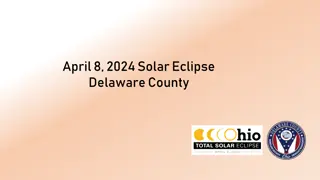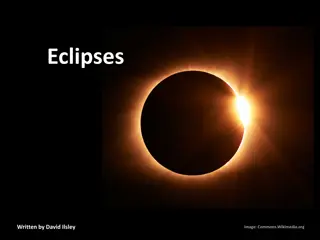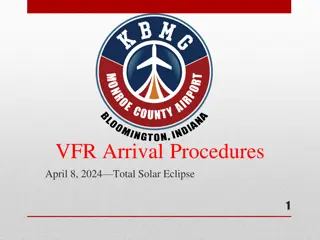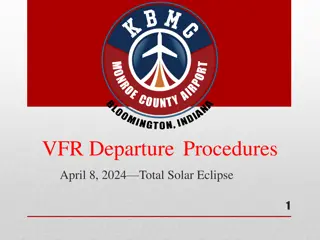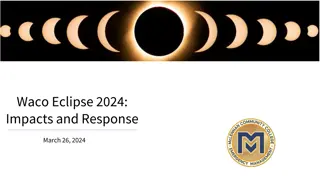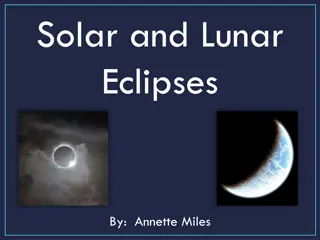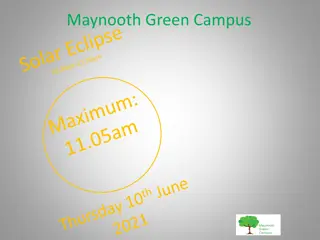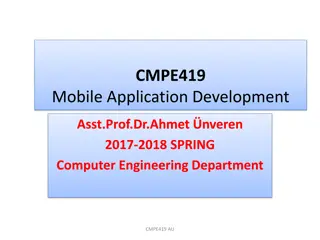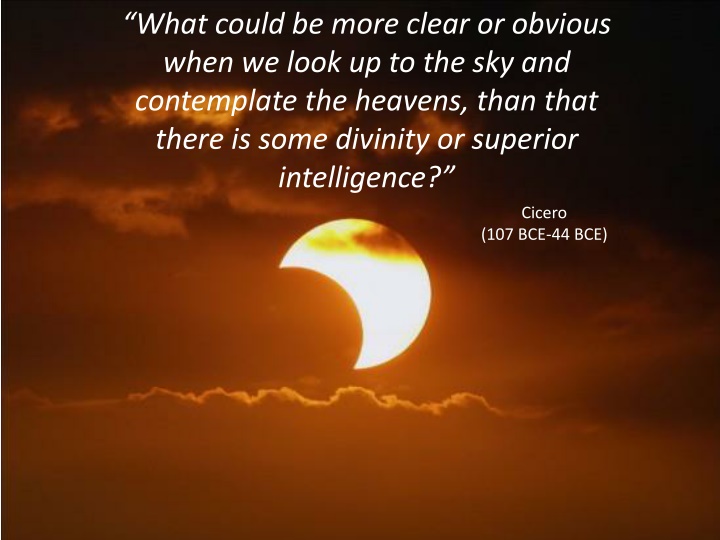
Design Arguments for the Existence of God: Newton, Paley, and More
Explore teleological arguments for the existence of God through the perspectives of historical figures like Cicero, Sir Isaac Newton, and William Paley. Discover how concepts of intelligent design are intertwined with discussions on astronomy, gravity, and the order in the universe.
Download Presentation

Please find below an Image/Link to download the presentation.
The content on the website is provided AS IS for your information and personal use only. It may not be sold, licensed, or shared on other websites without obtaining consent from the author. If you encounter any issues during the download, it is possible that the publisher has removed the file from their server.
You are allowed to download the files provided on this website for personal or commercial use, subject to the condition that they are used lawfully. All files are the property of their respective owners.
The content on the website is provided AS IS for your information and personal use only. It may not be sold, licensed, or shared on other websites without obtaining consent from the author.
E N D
Presentation Transcript
http://www.blazingcatfur.ca/wp-content/uploads/2015/02/eclps11-620x419.jpghttp://www.blazingcatfur.ca/wp-content/uploads/2015/02/eclps11-620x419.jpg What could be more clear or obvious when we look up to the sky and contemplate the heavens, than that there is some divinity or superior intelligence? Cicero (107 BCE-44 BCE)
http://www.independent.co.uk/incoming/article10069226.ece/alternates/w620/eclipse.jpghttp://www.independent.co.uk/incoming/article10069226.ece/alternates/w620/eclipse.jpg
Some teleological (design) arguments for the existence of God
Sir Isaac Newton (1642-1726/7) Blind Fate could never make all the Planets move one and the same way in concentric orbs.... Such a wonderful Uniformity in the Planetary System is associated with the first Creation by the Counsel of an intelligent Agent it s unphilosophical to seek for any other Origin of the World, or to pretend that it might arise out of a Chaos by the mere Laws of Nature . ( Opticks, 1717/1718)
Intelligent design or chance? When Isaac Newton discovered the existence of gravity, religious believers saw it as part of God s design to keep the regular movement of the heavenly bodies (planets/stars) in the universe. Newton rejects the idea that the Universe was created through chance and that the order resulted from chaos. He argues that there must have been an intelligent agent which set this order in place.
William Paley (1743-1805) Design qua regularity argument Paley used evidence from astronomy and Newton s laws of motion and gravity to prove design in the universe. http://upload.wikimedia.org/wikipedia/commons/e/ed/William-Paley.png He pointed to the rotation in the solar system and how they obey the same laws universal laws and hold their orbits due to gravity. He believed and argued that this could not come about by chance. He concluded an external agent must have imposed order on the universe as a whole and on its many parts and this agent is God.
The Ozone layer- evidence of God? https://www.acs.org/content/acs/en/education/resources/highschool/chemmatters/past-issues/archive-2012-2013/ozone-layer-our-global-sunscreen/_jcr_content/mainContent/columnsbootstrap/column0/textimage_0/image.img.jpg/1368218980203.jpg C.20th philosopher Arthur Brown agreed with the design argument based on astronomy giving the ozone layer as evidence of design.
Far too unlikely for the world to exist by chance? The odds of life would you bet? John Polkinghorne (a scientist and Church of England minister) Just one factor among many in the cosmos, the difference between expansive and contractive forces in the expanding cosmos according to one theory, depends upon an extremely fine balance of the total energy, the odds of which are: http://www.wpclipart.com/recreation/playing/throwing_water_balloon.png 1000000000000000000000000000000000000000000000000000000000000:1 1060 : 1 This is equivalent to taking aim from Earth and hitting an inch-wide target at the farthest reaches of the observable universe.


![[PDF⚡READ❤ONLINE] Road Atlas for the Total Solar Eclipse of 2024 - Color Editio](/thumb/21696/pdf-read-online-road-atlas-for-the-total-solar-eclipse-of-2024-color-editio.jpg)

